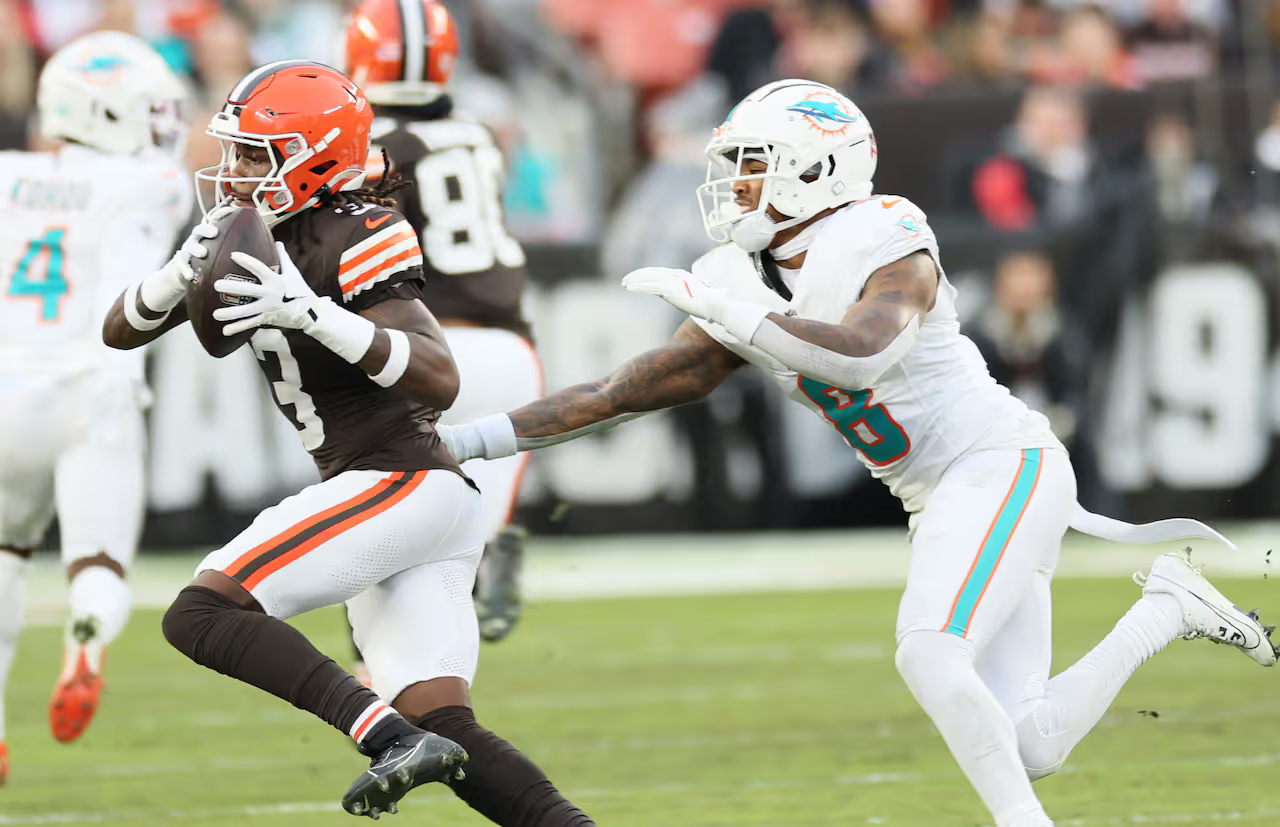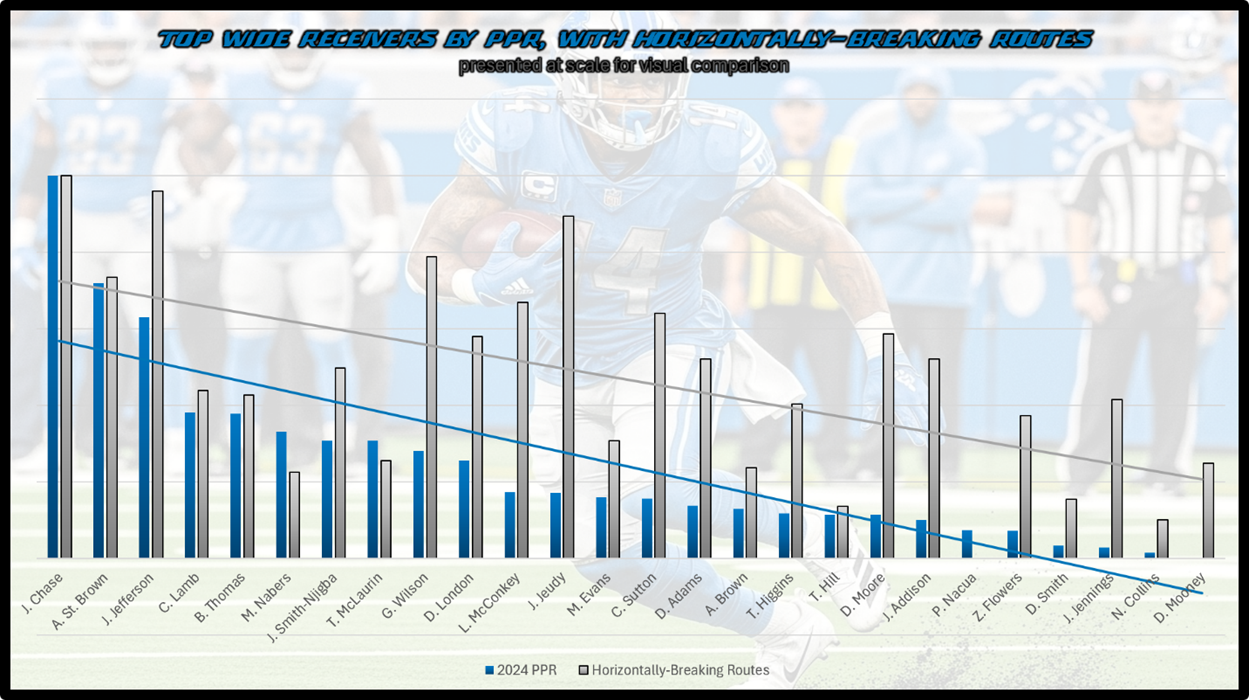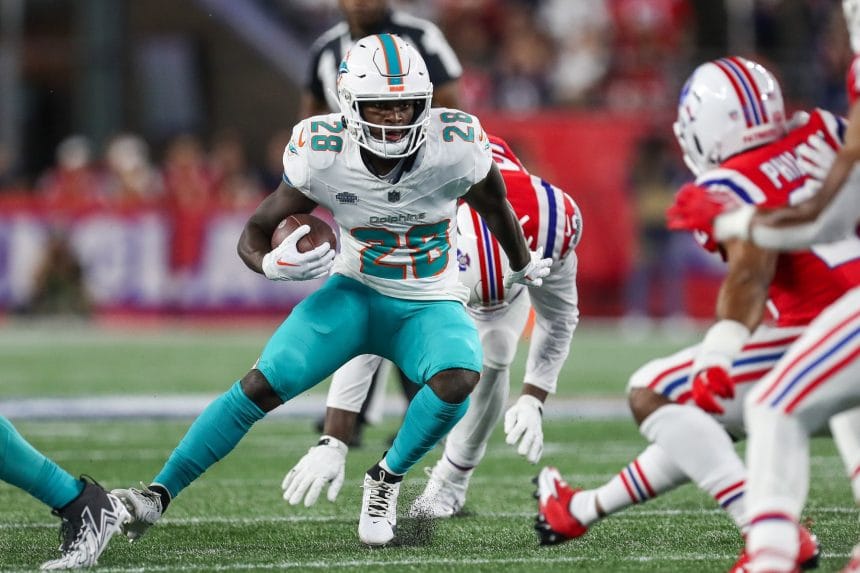
Overlooked Stats: The Right Type of Routes
In fantasy football, gaining an edge means going beyond rankings and uncovering predictive stats that go overlooked. Legacy stats like receptions, yards, and past PPR output are solid but are also low-hanging fruit. Every bushy-haired grandpa with a fantasy football magazine who enters your draft room uses these. That means they make poor tools for beating your league despite excellent signal.
The real advantage lies in digging deeper and identifying underutilized metrics that indicate future scoring spikes. The trick is spotting trends others miss – finding what actually predicts fantasy points before the rest of your league catches on.
PEARSON CORRELATION COEFFICIENTS
Pearson correlation coefficients are simple to calculate and measure the relationship between two variables, ranging from +1 to -1. With WRs in fantasy football, values over 0.4 indicate a meaningful signal; over 0.6 is highly significant. With tools from sites like RotoViz, PFF, or Fantasy Points, it’s easy to export large datasets and run correlations on hundreds of stats in just a few days.
A five to ten-year window strikes the right balance, as it is modern enough to reflect today’s game but deep enough for a stable dataset. I filter out players with low usage or those who missed the following season and anchor to PPR + N1 to identify forward-looking stats. Still, these parameters can vary depending on how an individual analyst sets the variables.
Correlation has limits. Stats don’t always rank in the same order from study to study, but the general strength of a stat’s signal tends to persist. We should remember to focus less on the exact sequence of the correlations’ strengths and instead on whether a stat is consistently predictive from year to year.
Today, we’ll take a look at horizontal breaks among WRs.
HORIZONTALLY-BREAKING ROUTES AS AN INDICATOR FOR WIDE RECEIVERS
Matt Harmon of Reception Perception and Jacob Gibbs of CBS have recently done excellent work on the stability of horizontally-breaking routes in fantasy, something I touched briefly on in my latest piece about Rashee Rice and the Chiefs’ skill core. So, I wanted to do a little digging and see for myself.
According to data I acquired from Fantasy Points Data Suite, the correlation coefficient between raw total routes and PPR + N1 is 0.645, indicating an excellent relationship. That’s slightly higher than the route data from PFF (0.611) and RotoViz (0.607), largely due to differences in how select stat services define a “route,” which creates fluctuations. There’s also a dataset mismatch here: my PFF and RotoViz data go back to 2015, while my Fantasy Points data only goes back to 2021.
Even then, Fantasy Points’ route-break data only extends to 2022, one year fewer than most of their other data, giving us just a two-year sample (2024 has no + N1 season, so only 2022 and 2023 have correlations), which is too small to be highly trustworthy.
Still, even in a small dataset, a clear signal begins to show. By comparing horizontally breaking routes to verticals, static routes, short/underneath work, and backfield/behind-the-line routes, we can already form a strong hypothesis about which route types should be favored over others.
A CLEAR PECKING ORDER ON ROUTE CONCEPTS?
|
Breaks |
Horiz. |
Vertical |
Static |
Shallow |
Backfield |
|
R |
0.649 |
0.610 |
0.522 |
0.419 |
0.186 |
By far, the most common route breaks among WRs are horizontal and vertical, accounting for roughly 70% of all WR routes. Horizontal routes show a noticeably stronger correlation coefficient to PPR + N1, and they are the only subset of routes with a higher correlation than raw routes overall. Vertical routes also correlate well with PPR + N1, with the effect diminishing from there.
Based on this data, we can reasonably conclude that horizontal and vertical breaks are the most predictive for WRs. Each provides a clear signal, with horizontal breaks showing slightly more stability. Even based on a small sample, it makes sense to target receivers who run more horizontally-breaking routes.

With horizontal route breaks proving to be strong predictors of fantasy scoring, I decided to dig for value by seeing which WRs ran these high-value routes most consistently in 2024, comparing that to each player’s current FFPC Redraft ADP. This highlights the types of receivers who could outperform expectations simply by running the routes that matter most. In the sections below, I’ll spotlight five to ten WRs who stand out under this lens, giving fantasy managers a clearer sense of who could deliver upside beyond what the rankings suggest.


